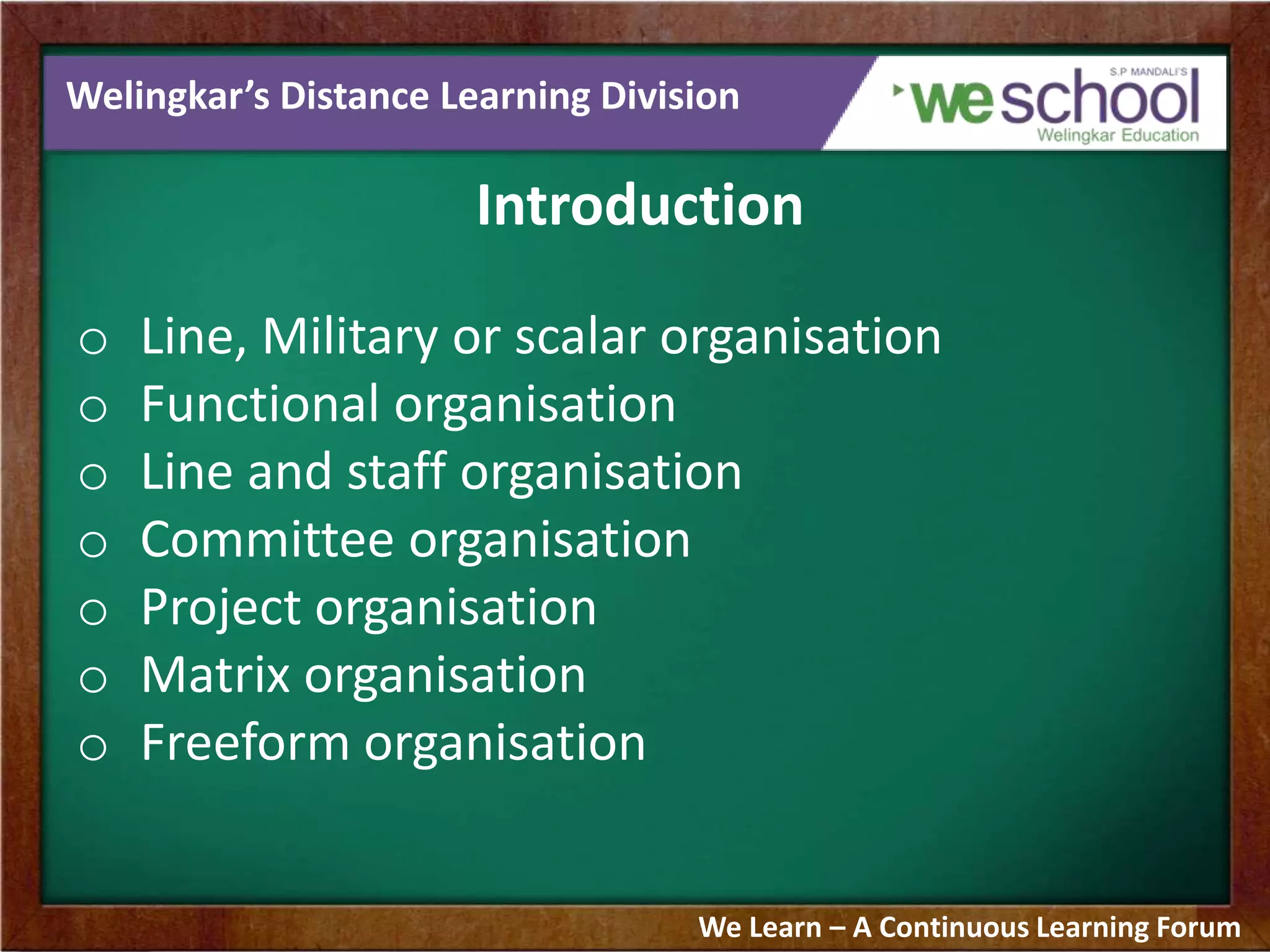This document discusses different types of organizational structures. It begins by describing a line or scalar organization, where authority flows vertically from top to bottom. It then explains functional organizations, where work is divided by specialized functions. The document also covers line and staff organizations, where line officers have decision-making authority and are assisted by staff officers who provide advice. It provides details on each type of organization, including their characteristics, advantages, disadvantages, and suitability for different business contexts.



































